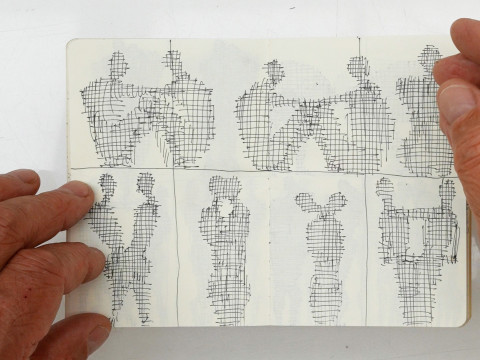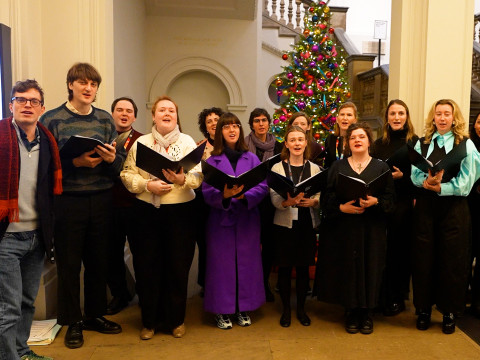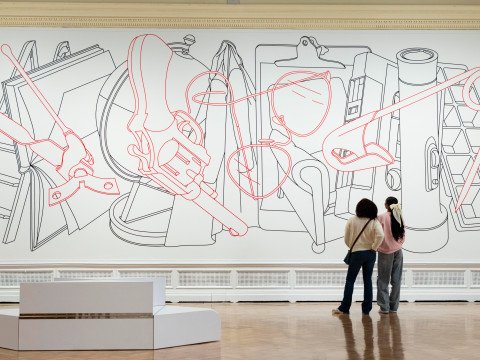
How to read it: Frank Cadogan Cowper's Vanity
By RA Collections team
Published on 21 April 2020
Combining allusions to both Renaissance and Pre-Raphaelite painting, Frank Cadogan Cowper’s Vanity celebrates beauty while cautioning against excessive self-regard. Unravel the painting’s influences in this three-minute read.
A version of this article was originally published in February 2018.

Why is it called Vanity?
The title of the painting references a genre of painting known as vanitas, which was popular in the 16th and 17th centuries. Usually still-lives, vanitas paintings aimed to remind viewers of their mortality and the fleeting nature of earthly possessions, taking their name from the biblical insistence that “all is vanity”.
In Cowper’s 1907 portrait, the title reminds us that neither the beautiful woman in her luxurious clothes or the ripe grapes in the background can flourish forever – in time, both will fade and die.
Who is the model?
Sadly, we don’t know who the woman in the painting is. With her long, red hair, she bears a strong physical resemblance to the models favoured by Pre-Raphaelite Brotherhood artists Dante Gabriel Rosetti and John Everett Millais in the previous century. In the 1990s, poet Frances Sackett wrote a poem from the perspective of the unknown model, imagining her as perplexed by her role in the creation of the painting: “And so he calls me ‘Vanity’ / And makes me feel the guilt of all / His observation”.
What is she wearing?
The clothes in the painting show a mixture of historic and contemporary influences. The silver hand-mirror and string of pearls reflect the fashion of the early 20th century, but the predominant influence is Renaissance Italy. The woman wears a ferronière (jewelled headband) in a style that dates back to the 15th century, while the the elaborate dress with its serpentine pattern is similar to one depicted in the Italian Renaissance artist Giulio Romano’s Portrait of Margherita Paleologo in the Royal Collection, which Cowper may have studied. The same dress pattern was also used by PRB follower Edward Burne-Jones in his watercolour Sidonia von Bork, now in the Tate’s Collection. Cowper’s desire to emulate Renaissance art extended to a large, ornate picture frame, which he selected himself.
Who is the artist?
Frank Cadogan Cowper was born in 1877 and studied at the RA Schools in his twenties. He enjoyed significant critical acclaim early on in his career, writing to his mother that both Vanity and another painting exhibited at the RA in 1907 were “a terrific success. I am continually getting letters from people wanting to buy one or the other.” He was particularly excited that the art dealer Joseph Duveen wanted to buy the work, adding “I can feel sure my work is good if he thinks it worth buying.”
Later that year Cowper was made an Associate Member of the Royal Academy at the age of 30, making him the youngest artist to receive the honour in almost three decades. His interest in vanitas may be linked to his own supposedly modest way of life – when he was finally made a full Royal Academician in 1934, he remarked “I thought they never would elect a man unless he kept up some kind of show in his way of living. But of course as they have done it I can go on living as I like!”
How did the painting end up in the RA Collection?
Every newly elected RA is required to give an example of their work, known as a Diploma Work, to the Royal Academy’s Collection. Cowper initially wanted to submit Yseult the Fair, Queen of Cornwall as his Diploma Work, but it was rejected as too large.
Cowper was clearly very attached to Vanity – after selling the painting, he bought it back in 1921 because it was one that he "really wanted to keep". Eventually, however, his own vanity intervened and he gave the work to the RA Collection, knowing it would serve as an impressive legacy for future generations to admire after his death. After all, you can't take it with you.
Did you catch all that? Here's a 60-second guide...
Related articles

My sketchbook: sculpture drawings by Antony Gormley RA
13 January 2025

Video: Merry Christmas from the Burlington House choir
18 December 2024

Video: drawing on gallery walls with tape
15 October 2024